Sabauda Gallery
The Sabauda Gallery (Italian: Galleria Sabauda) is an art collection in Turin, Italy, which contains the royal art collections amassed by the House of Savoy over the centuries. It is located on Via XX September, 86.
 The new headquarters | |
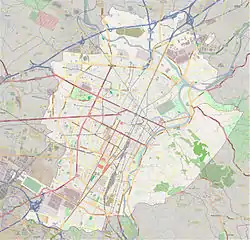 Location within Turin | |
Former name | Royal Gallery |
|---|---|
| Established | 2 october 1833 |
| Location | Via XX September, 86 10122 Turin, Italy |
| Type | Art museum, Historic site |
| Visitors | 515,632 (2018) |
| Founder | Charles Albert of Sardinia |
| Director | Annamaria Bava |
| Website | website |
The museum, whose first directors were Roberto and Massimo d'Azeglio, unites the art collection of Eugene of Savoy, acquired after his death by his cousin, the king of Sardinia, with the works from the Royal Palace of Turin, the picture gallery of the Savoy-Carignano, and the artworks from the Palazzo Durazzo of Genoa, acquired in 1824.
On October 2, 1832 (his birthday), King Charles Albert of Savoy inaugurated the royal gallery at the Palazzo Madama, containing 365 paintings. In 1865, Massimo d'Azeglio had the collection transferred to Guarino Guarini's Palazzo dell'Accademia delle Scienze (1679) where it stood until 2012, before it was moved to the current location.
On December 4, 2014, at the presence of the Italian Minister of Culture, the "Manica Nuova" of Palazzo Reale (New Wing of the Royal Palace) was official opened.[1] The collection has now found its final place to be exhibited. The gallery is based on a brand new museum project conceived and developed by the superintendent Edith Gabrielli (for the scientific part) together with Studio Albini Associati (staging). The lighting is by CastagnaRavelli Studio, based in Milan, the graphic is by Noorda Design. Unfortunately, the second floor galleries - half the collection, including many Dutch paintings - are often closed, for weeks or months at a time, apparently for lack of staff, without this information being published anywhere.
Collection
The collection includes works by Netherlandish artists such as Gerrit Dou, Jan van Eyck (side panels of the Annunciation Triptych), Jan van Huchtenburg, Hans Memling (Scenes from the Passion of Christ), Rembrandt, and Anthony van Dyck (Portrait of the Three Eldest Children of Charles I), as well as paintings by Italian artists such as Duccio di Buoninsegna (Gualino Madonna), Macrino d'Alba, Sandro Botticelli, Filippino Lippi (Three Angels and Young Tobias), Bernardo Daddi, Fra Angelico, Piero del Pollaiolo, Agnolo Bronzino, Bernardo Bellotto, Giovanni Canavesio, Orazio Gentileschi (Annunciation), Andrea Mantegna, Girolamo Savoldo, Giovanni Battista Tiepolo, Gaudenzio and Defendente Ferrari, Giovanni Bellini, Guercino, Francesco Cairo, Sebastiano Ricci, Giovanni Martino Spanzotti, Titian, Paolo Veronese, and Tintoretto, and the Frenchman Pierre Subleyras.[2]
Selected highlights
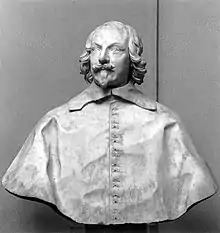
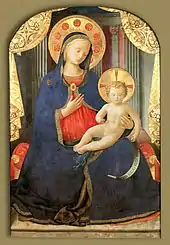 Fra Angelico
Fra Angelico
Madonna and Child, c. 1430, 63 x 47 cm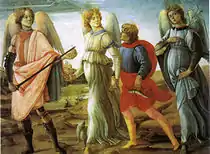 Filippino Lippi
Filippino Lippi
Tobias and the Archangels, c. 1485,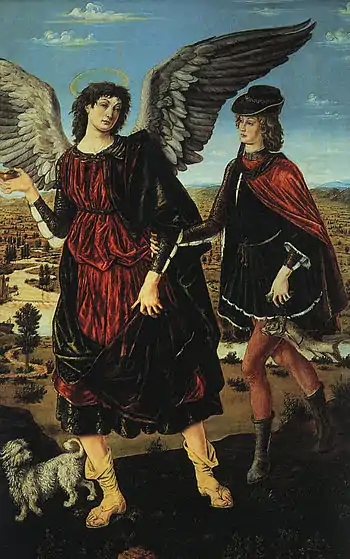 Antonio del Pollaiolo
Antonio del Pollaiolo
Tobias and Angel, c. 1460 Rembrandt
Rembrandt
Old Man Sleeping by a Fire, c. 1629, 52 x 41 cm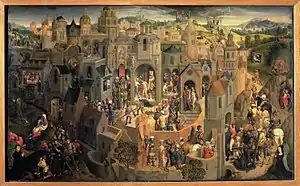 Hans Memling
Hans Memling
Passion of Christ, c. 1471, 57 x 92 cm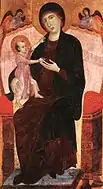 Duccio di Buoninsegna
Duccio di Buoninsegna
Gualino Madonna, c. 1285, 157 x 86 cm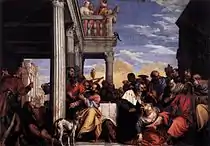 Paolo Veronese
Paolo Veronese
Feast in the House of Simon, c. 1560, 315 x 451 cm Mars and Venus
Mars and Venus
Paolo Veronese, c. 1570, 47 x 47 cm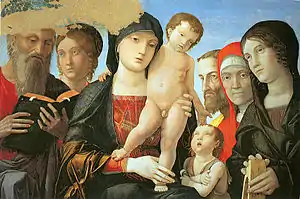
_-_Orazio_Gentileschi.jpg.webp)
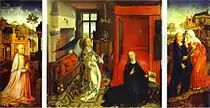 Rogier van der Weyden
Rogier van der Weyden
Annunciation Triptych (wings), c. 1434,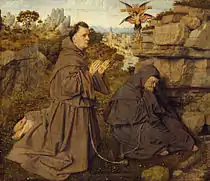 Jan van Eyck
Jan van Eyck
Stigmata of San Francesco, c. 1432
References
- "One of Italy's most extraordinary collections returns home in Turin's Royal Palace". www.italy24.ilsole24ore.com. Retrieved Apr 28, 2020.
- "Acquisitions of the month: December 2018". Apollo Magazine.
.svg.png.webp)